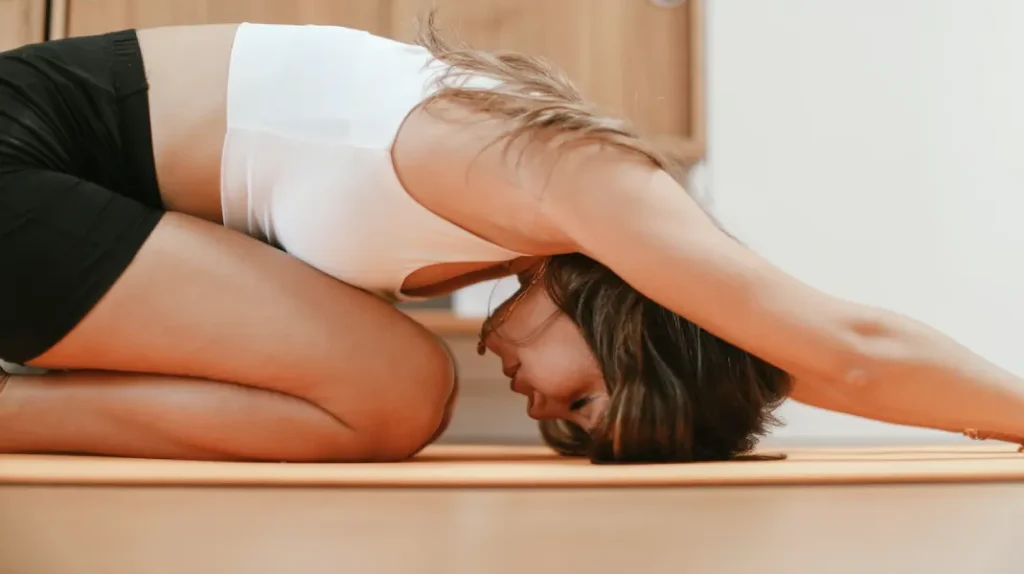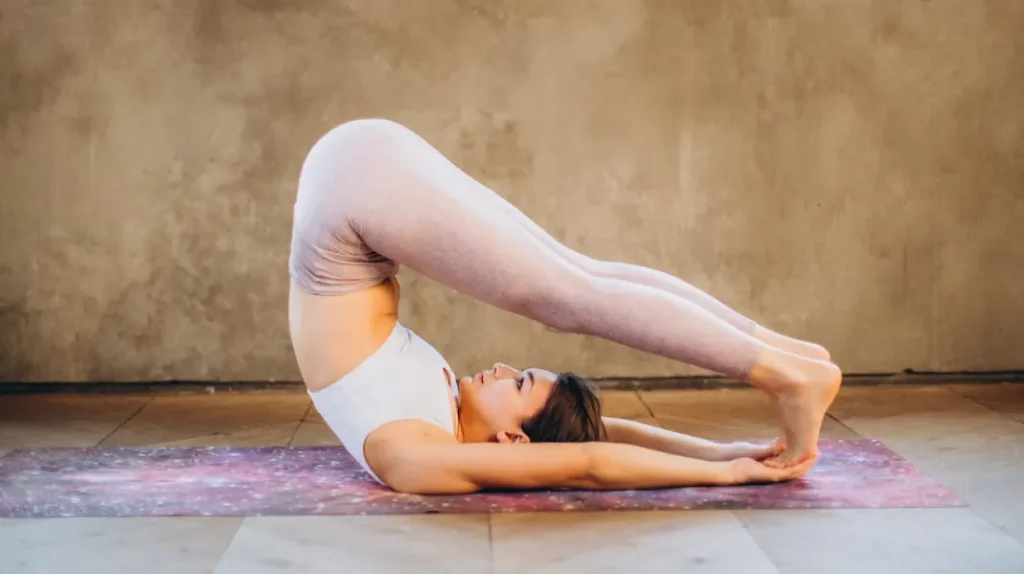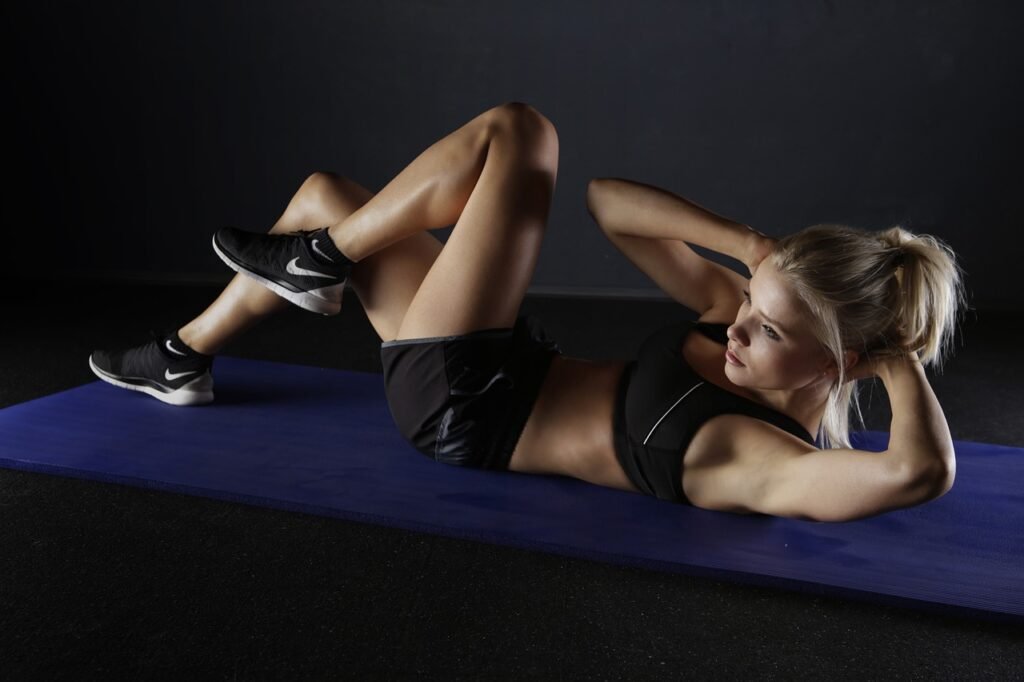Feeling stressed or overwhelmed? Look no further than the power of stretching and breathing exercises to help ease tension and promote relaxation. Whether you’re looking to unwind after a long day or wanting to enhance your overall well-being, incorporating these simple yet effective practices into your routine can work wonders for your mind and body. By gently stretching your muscles and taking deep breaths, you can release built-up tension, increase your flexibility, and achieve a sense of inner calm. So, take a moment for yourself, find a quiet space, and join us as we explore the benefits of stretching and breathing exercises.
Benefits of Stretching and Breathing Exercises
Stretching and breathing exercises offer numerous benefits for both your physical and mental well-being. By incorporating these practices into your daily routine, you can experience improved flexibility, reduced muscle tension, increased blood circulation, enhanced relaxation and stress relief, improved posture and body alignment, and a reduced risk of injury. Furthermore, stretching and breathing exercises can boost athletic performance, improve breathing efficiency, enhance mental focus and clarity, and contribute to your overall sense of well-being.
Types of Stretching Exercises
There are several types of stretching exercises that you can incorporate into your routine to reap the benefits mentioned above.
Static stretching
Static stretching involves holding a stretch in a comfortable position for a prolonged period. This helps to elongate the muscles, improve flexibility, and increase the range of motion.
Dynamic stretching
Dynamic stretching involves moving through a series of controlled movements that mimic the activities you’re about to perform. It helps to improve flexibility, warm up the muscles, and increase blood flow to the working muscles.
Ballistic stretching
Ballistic stretching involves using momentum to force a stretch beyond its normal range of motion. While it can enhance flexibility, it should be done cautiously to avoid injury.
Proprioceptive neuromuscular facilitation (PNF) stretching
PNF stretching combines passive stretching with isometric contractions. It involves contracting and then relaxing a muscle while it is elongated, which helps to improve flexibility.
Active isolated stretching (AIS)
AIS involves holding a stretch for just a few seconds and then actively contracting the opposing muscle. This technique helps to improve flexibility and increase the range of motion.

Key Principles for Safe and Effective Stretching
To ensure safe and effective stretching, it is important to follow these key principles:
Warm up before stretching
Before starting any stretching exercises, it is essential to warm up your muscles with light aerobic activity. This increases blood flow, warms up the muscles, and prepares them for stretching.
Focus on major muscle groups
When stretching, it is important to focus on major muscle groups such as the legs, back, chest, and shoulders. This ensures that you are targeting the areas that commonly require stretching.
Move slowly and hold stretches
During stretching exercises, it is important to move slowly and avoid any jerking or bouncing movements. Instead, hold each stretch for 15 to 30 seconds, allowing the muscles to elongate gradually.
Avoid bouncing or jerking movements
Bouncing or jerking movements during stretching exercises can cause injury and strain on the muscles. To avoid this, aim for smooth and controlled movements throughout your stretches.
Breathe deeply and relax during stretches
One of the key aspects of stretching is to maintain deep, relaxed breathing. This helps to release tension and promote relaxation throughout the body.
Listen to your body and avoid overstretching
It is important to listen to your body during stretching and avoid pushing yourself too far. Overstretching can lead to muscle strains and injuries. Instead, aim for a comfortable stretch where you feel a gentle tension in the muscles.
Stretching Exercises for the Upper Body
Stretching the upper body can help relieve tension and improve flexibility in the neck, shoulders, chest, and back. Here are some exercises you can incorporate:
Neck stretches
Gently tilt your head to one side, bringing your ear towards your shoulder. Hold for 15 to 30 seconds and then repeat on the other side. You can also do forward and backward neck stretches to target different muscles.
Shoulder stretches
Extend one arm across your chest, using your other arm to gently pull it closer to your body. Hold for 15 to 30 seconds and then switch sides. You can also do shoulder rolls and arm circles.
Chest stretches
Interlace your fingers behind your back, lift your arms while keeping them straight, and squeeze your shoulder blades together. Hold for 15 to 30 seconds. You can also do a doorway stretch by placing your forearms on either side of a door frame and leaning forward.
Back stretches
Lie on your back and bring your knees to your chest, hugging them gently. Hold for 15 to 30 seconds. You can also do a cat-cow stretch by getting on all fours and alternately arching and rounding your back.
Stretching Exercises for the Lower Body
Stretching the lower body is essential for improving flexibility in the hamstrings, quadriceps, calves, and hips. Here are some exercises to include:
Hamstring stretches
Sit on the floor with one leg extended in front of you and the other leg bent at the knee. Reach towards your toes, keeping your back straight. Hold for 15 to 30 seconds and then switch legs. You can also do standing hamstring stretches by placing one foot on a raised surface, keeping your leg straight, and leaning forward.
Quadriceps stretches
Stand up straight and grab the top of one foot behind you, gently pulling it towards your glutes. Hold for 15 to 30 seconds and then switch legs. You can also do standing quad stretches by bending one knee and bringing your heel towards your glutes, holding onto a stable surface for balance if needed.
Calf stretches
Stand facing a wall, placing your hands on it for support. Step one leg back and press your heel into the ground while keeping your knee straight. Hold for 15 to 30 seconds and then switch legs. You can also do calf stretches by sitting on the floor with your legs extended in front of you and using a towel or resistance band to gently pull your toes towards you.
Hip stretches
Sit on the floor with your legs crossed and lean forward, aiming to bring your chest towards your knees. Hold for 15 to 30 seconds. You can also do a butterfly stretch by sitting on the floor with the soles of your feet together and gently pressing your knees towards the ground.
Yoga and Pilates-based Stretching Exercises

Yoga stretching exercises and Pilates-based stretching exercises combine both stretching and breathing techniques, providing a holistic approach to improving flexibility and overall well-being. Here are some exercises you can try:
Sun salutations
Sun salutations are a series of flowing movements that stretch the entire body. They involve forward folds, lunges, downward dogs, and upward dogs. Sun salutations help to increase flexibility, build strength, and improve circulation.
Warrior poses
Warrior poses are standing poses that target the legs, hips, and core. They help to improve balance, strength, and flexibility. Warrior I, Warrior II, and Warrior III are common variations of this pose.
Bridge pose
Bridge pose is a backbend that stretches the spine, chest, and shoulders. It also helps to strengthen the glutes and hamstrings. To do this pose, lie on your back with your knees bent and feet flat on the ground, then lift your hips towards the ceiling while keeping your shoulders and feet grounded.
Child’s pose
Child’s pose is a gentle resting pose that stretches the back, hips, and ankles. It promotes relaxation and releases tension in the body. To do this pose, kneel on the floor and lean forward, resting your forehead on the ground and extending your arms forward.
Cat-cow stretch
The cat-cow stretch is a gentle movement that promotes spinal flexibility and stretches the back and core muscles. Start on all fours and alternate between arching your back upwards like a cat and dropping your belly towards the ground like a cow.
Pelvic tilts
Pelvic tilts help to stretch the lower back and improve core stability. Lie on your back with your knees bent and feet flat on the ground. Gently tilt your pelvis forward and backward, engaging your abdominal muscles.
Pilates hundreds
The Pilates hundreds exercise is a challenging core exercise that also helps to stretch and strengthen the entire body. Lie on your back with your legs extended and lift your head, neck, and shoulders off the ground. Pump your arms up and down while maintaining a steady breath.

Benefits of Breathing Exercises
Breathing exercises are an integral part of stretching and can provide numerous benefits for your physical and mental well-being.
Stress reduction and relaxation
Breathing exercises help activate the body’s relaxation response, reducing stress and promoting a sense of calm.
Improved lung capacity
Deep breathing exercises can improve lung capacity and oxygen intake, leading to better overall respiratory function.
Lower blood pressure
By slowing down and deepening your breathing, you can help lower your blood pressure and reduce the strain on your cardiovascular system.
Enhanced focus and concentration
Certain breathing techniques, such as alternate nostril breathing, can help improve focus and concentration by balancing the left and right hemispheres of the brain.
Improved digestion and metabolism
Deep breathing exercises can stimulate the parasympathetic nervous system, promoting healthy digestion and metabolism.
Boosted immune system
Deep breathing exercises increase the flow of oxygen and promote lymphatic circulation, which can strengthen the immune system.
Improved sleep quality
Breathing exercises, particularly before bedtime, can help calm the mind and relax the body, leading to better sleep quality.
Increased energy levels
By improving oxygen intake and reducing stress, breathing exercises can boost energy levels and improve overall vitality.
Deep Breathing Techniques
To experience the benefits of breathing exercises, try incorporating these techniques into your routine:
Diaphragmatic breathing
Sit or lie down in a comfortable position. Place one hand on your chest and the other on your abdomen. Breathe deeply, focusing on expanding your abdomen as you inhale and relaxing it as you exhale.
Alternate nostril breathing
Sit in a comfortable position and block one nostril with your thumb. Inhale deeply through the open nostril, then block it with your ring finger and exhale through the other nostril. Continue alternating nostrils for several minutes.
Three-part breath
Sit or lie down comfortably. Inhale deeply, filling your abdomen, then your ribcage, and finally your chest. Exhale in reverse, releasing the breath first from your chest, then your ribcage, and finally your abdomen.
Ocean breath (ujjayi pranayama)
Inhale deeply through your nose, creating a slight constriction at the back of your throat. Exhale slowly through your nose, making a soft “ha” sound as the air passes through your throat.
Box breathing
Visualize drawing a square shape in your mind. Inhale for a count of four, hold your breath for a count of four, exhale for a count of four, and hold your breath for a count of four again before starting a new breath cycle.
Breathing Exercises for Stress Relief
When you need a quick stress relief, try these breathing exercises:
4-7-8 technique
Inhale deeply through your nose for a count of four, hold your breath for a count of seven, and exhale slowly through your mouth for a count of eight. Repeat this cycle four times.
Sama Vritti (Equal Breathing)
Inhale deeply through your nose for a count of four, and then exhale through your nose for a count of four. Repeat this cycle for several minutes, focusing on maintaining equal inhales and exhales.
Progressive muscle relaxation with deep breathing
Start by tensing and then releasing each muscle group in your body, beginning with your toes and working your way up to your head. As you release each muscle group, take a deep breath and exhale slowly, focusing on the sensation of relaxation.
Incorporating Stretching and Breathing Exercises into Daily Routine
To make the most of stretching and breathing exercises, consider incorporating them into different parts of your daily routine:
Morning routine
Start your day by performing a few gentle stretching exercises and incorporating deep breathing techniques. This can help awaken your body and mind, preparing you for the day ahead.
Before and after physical activity
Before engaging in physical activity, perform dynamic stretches to warm up your muscles and increase blood flow. Afterward, incorporate static stretches to improve flexibility and aid in muscle recovery.
During work breaks
If you spend long hours sitting at a desk, take regular breaks to stretch and perform breathing exercises. This can help alleviate muscle tension and improve focus and productivity.
Evening wind-down routine
Create a wind-down routine before bed that includes gentle stretching exercises and deep breathing techniques. This can help relax the body and mind, promoting better sleep quality.
Incorporating into exercise classes or yoga sessions
If you attend exercise classes or yoga sessions, make sure to actively participate in the stretching exercises and incorporate proper breathing techniques to maximize the benefits of the practice.
By incorporating stretching and breathing exercises into your daily routine, you can experience an array of physical and mental benefits. Whether you choose static stretching, dynamic stretching, or yoga-based exercises, remember to listen to your body, focus on your breathing, and practice patience. With consistency and dedication, you can improve your flexibility, reduce tension, and enhance your overall well-being.

